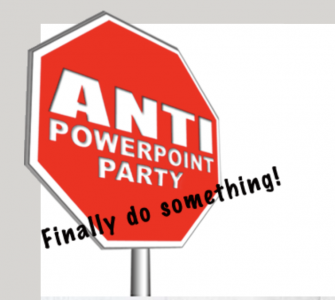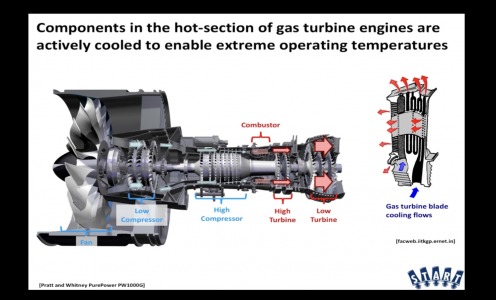By Madeline Walker, EAL Specialist, Centre for Academic Communication
Did you know that the Anti PowerPoint Party (APPP) is the eighth largest political party in Switzerland? Their platform has one message: Stop using presentation software because it wastes time and money. Instead, the party “advocates the use of flip-charts for all presentations. Compared to PowerPoint (PowerPoint is always mentioned as the representative of all presentation software), the use of flip-charts creates a multiple effect for the audience in terms of impact, excitement, and comprehensibility. This is not a hypothetical assumption but can immediately be proven through comparisons.”

The APPP claims that PPT presentations not only waste time and money, they also bore the audience, block energy flow, impede emotion, encourage writers to turn vivid verbs into inert nouns, and destroy motivation. The APPP are calling for a national referendum for a law prohibiting PowerPoint during presentations. Sounds wacky, but it’s true.
Members of the APPP are not the only ones protesting PowerPoint. Designer Edward Tufte has long argued that PowerPoint presentations are the wrong medium for serious technical reports. He uses the destruction of the Columbia Space Shuttle as an example of crucial technical information being lost on a PowerPoint slide—you can read his fascinating report. He recommends serious presentations start with the audience silently reading a six page narrative (no bullet points). As a result of Tufte’s work, Amazon stopped using PowerPoint and started using his method and say it’s a “miracle in communication”
Perhaps you’re not a PowerPoint fan either. But the expectation of your supervisor or department is that you use it for your presentations. Well, if you can’t use flipcharts (APPP) or have your audience read six pages (Tufte), you might consider this compromise: prepare an Assertion -Evidence (AE) talk. There are three basic principles of an AE talk: (1) build your talk on messages or assertions (not topics); (2) support these messages with visual evidence (not bullet lists); and (3) explain this evidence by fashioning words on the spot.
This method, developed by Michael Alley at Pennsylvania State University, has two advantages. First, although it takes more effort to build an AE talk than a conventional PPT talk, you will feel and project confidence as you speak to the visual content on the slides and “show ownership” of the material. Second, tests of audience comprehension show this approach leads to the audience understanding and remembering more than they would in a conventional PowerPoint presentation.

Although this method was developed specifically for engineers and scientists, I think it could be effective in any discipline. If textual material is essential to your talk, you can use Tufte’s idea of distributing a handout before the talk for a few minutes of silent reading.
The Assertion- Evidence website provides tutorials on how to create an AE talk, templates for the slides, examples of effective undergraduate and graduate AE talks, and even a video of an award-winning PhD defense using this method.
The next time you present, consider exploring the AE method. Avoid those mind-numbing bullet lists and slides loaded with too much text. Engage your inner public speaker, fashioning words on the spot in response to the assertions and evidence on each carefully crafted slide. Who knows, it could become your new way of presenting!
And don’t forget to book an appointment with a tutor to create your slides and practice your talk. We are here to support you on your university journey.